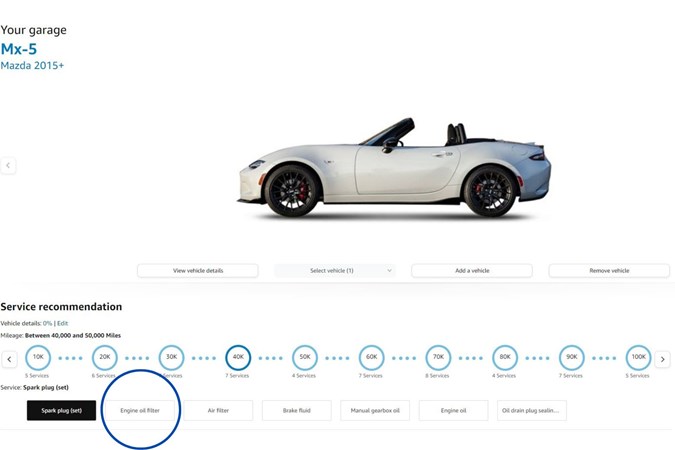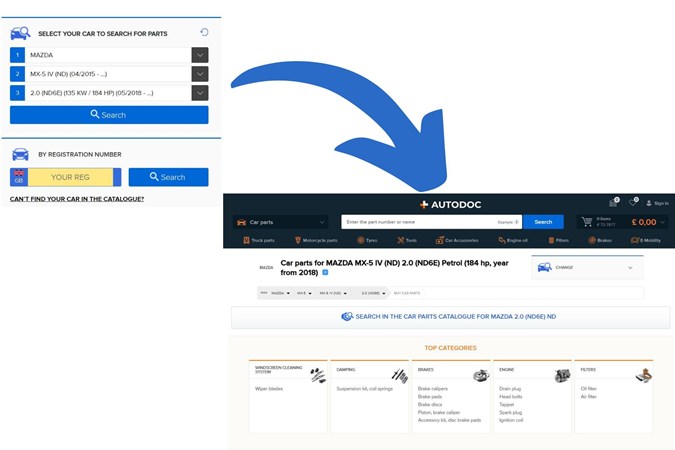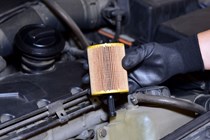The thought of tackling mechanical maintenance at home can feel overwhelming for many car owners. Most of us would prefer leaving an oil filter change to an expert, avoiding the stress of accidentally damaging something that was working fine in the first place. However, changing your car’s oil filter at home is a simple task when done correctly, not to mention it’s far more cost-effective than taking it to your local mechanic.
As we pointed out in our guide to changing engine oil, a car does need a complete oil change occasionally, in addition to the more frequent task of topping it up. It’s still a job easily completed at home but does involve a few extra steps. One of these is changing the oil filter.
We covered the subject briefly in our guide to changing engine oil but thought we’d go into a bit more depth, so you understand exactly what an oil filter does, how to find the right replacement for your car and a more detailed explanation of how to change it.
What is an oil filter?
As with any filter, an oil filter removes contaminants that accumulate in a system. In this case, it’s a car’s lubrication system, which is where the engine oil flows. If it helps make the picture clearer, you can draw a parallel between filters and kidneys. Over time, the oil filter gets saturated with particles and becomes inefficient.

Keeping the engine oil at the correct level helps the whole system run smoothly. But every so often (i.e., every several thousand miles) engine oil needs a complete drain and replacement, which is a process that includes replacing the oil filter.
What you need for changing an oil filter
- Oil
- Oil filter
- Nitrile gloves
- Oil pan
- Oil filter wrench
- Jack and jack stands
- Basic Ratchet and sockets
- Rags
Step-by-step guide to changing an oil filter
1. Prepare your car
Firstly, ensure your car is parked on a level surface. If you’ve just driven it, let the engine cool down before starting. Engage the parking brake and, if needed, raise the front of the car using a jack, but always make sure to secure it with jack stands or ramps. Never rely solely on a floor jack for support—this is crucial for your safety while working under the vehicle.
2. Locate and access the oil filter
Here’s the fun bit. Oil filters on cars are accessed from one of two places: from underneath the car or from the engine bay. For the former, you will likely have to remove the protective undertray and the oil filter housing before you can access and unscrew the oil filter itself.

In the case of the latter, things are a bit easier because you don’t have to get underneath the car. Just pop the bonnet and access the housing and oil filter from there.
3. Drain the old oil
This is where things can get messy, so it’s a good idea to put on your gloves. Place your oil pan directly beneath the filter before unscrewing anything, as a fair amount of oil will likely spill out once you loosen it. If working underneath the car, loosen the oil filter until oil starts to run out from it and is caught in the oil pan.
4. Remove the old oil filter
Unscrew the oil filter once the flow has reduced. In theory, oil filters don’t need any tools to remove. They can be unscrewed by hand. However, some can be stubborn, stuck, or overtightened by the person who fitted it. In this case, you may need to give it some more welly or use an oil filter tool.

5. Prepare the new filter
Likewise, with loosening, the replacement filter should be fastened by hand. Make sure it’s free from any dirt and give the rubber seal of the filter a light covering with clean oil. Screw on the filter, making sure not to cross-thread it.
Replace the filter cap, and the undertray if necessary. Clean your work area with rags (it also pays to do this as you go), and make sure the drained oil is stored safely in the container for when you next head to the tip to dispose of it properly. Then, check your oil level with the dipstick and top up with fresh oil as necessary.
Finding the right replacement oil filter
There are a few options here and it’s important to get the right replacement oil filter because predictably, different cars use different filters.
Check your owner’s manual to find out what sort of oil filter your car uses. You can also find the correct range of replacement oil filters by using various online tools. One is Amazon Garage, where you enter your car’s details and find appropriate oil filters through a narrowed search.

Similar options exist elsewhere online too, such as Autodoc, the leading online retailer for auto parts in Europe. Likewise, with Amazon Garage, go to the Autodoc website and search for an oil filter via the model-specific filter.

In terms of brands of oil filters themselves, some of the most trusted on the market include Bosch, Mann, and Kamoka Auto Parts. You will come across two types of oil filter: screw-on metal ones that can be fastened and loosened by hand. There are also paper filters with a screw cap on top. In either case, they’re easy to fit and remove.
FAQs
-
How often should an oil filter be changed?
It is recommended that you change your oil filter every time you replace your engine oil, which is typically 5,000 to 10,000 miles, depending on your vehicle and driving conditions. However, always double-check your car's manual to see what they recommend, as some filters and oils may require more frequent changes.
-
Can I re-use an oil filter?
No, oil filters are not designed to last more than one oil change. Always replace the filter with a new one to avoid damaging your vehicle.
-
Can I change my oil filter without changing the oil?
Yes, you can change the oil filter without draining the engine oil. However, it's best to change both the filter and the oil together to prevent the filter from clogging with old oil and debris, ensuring optimal engine performance.
Sign up to the Parkers Newsletter to keep up to date with more of the latest reviews, news, and recommendations from the Parkers team.
Just so you know, we may receive a commission or other compensation from the links on this website - read why you should trust us.












